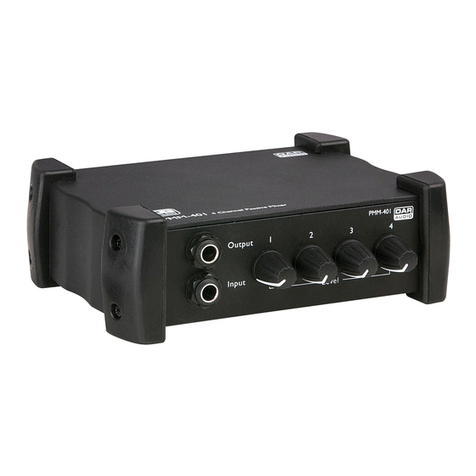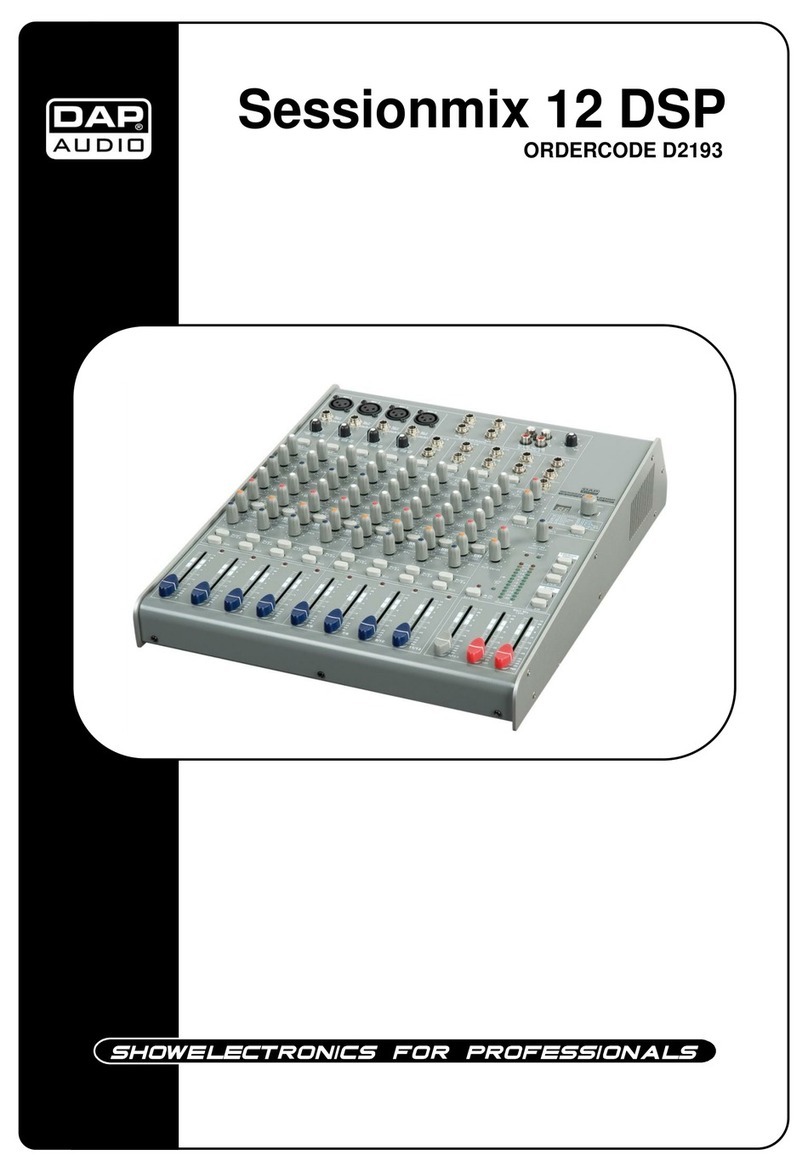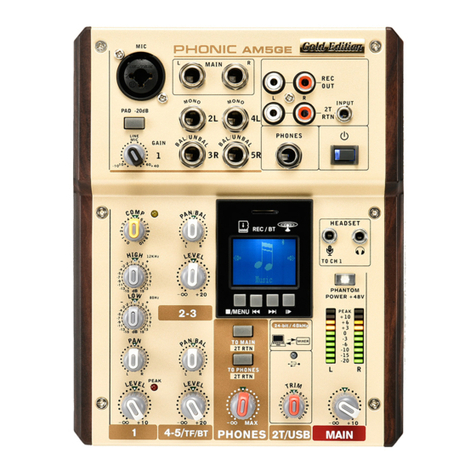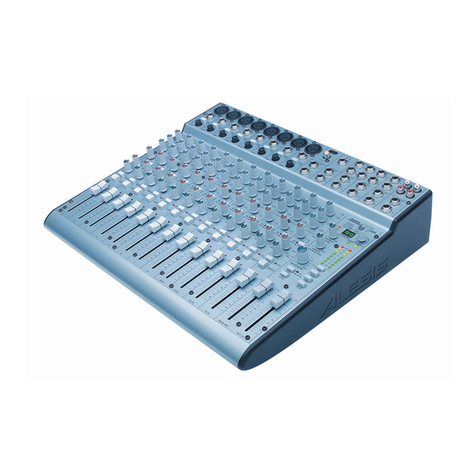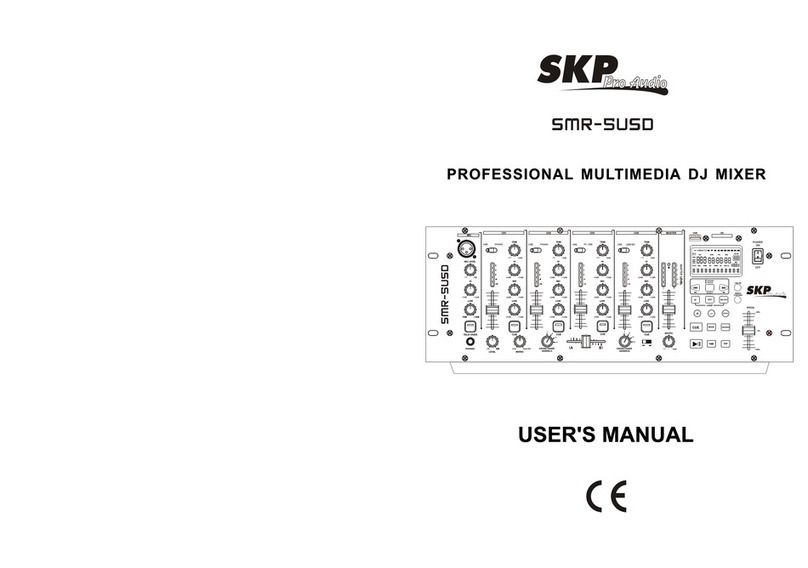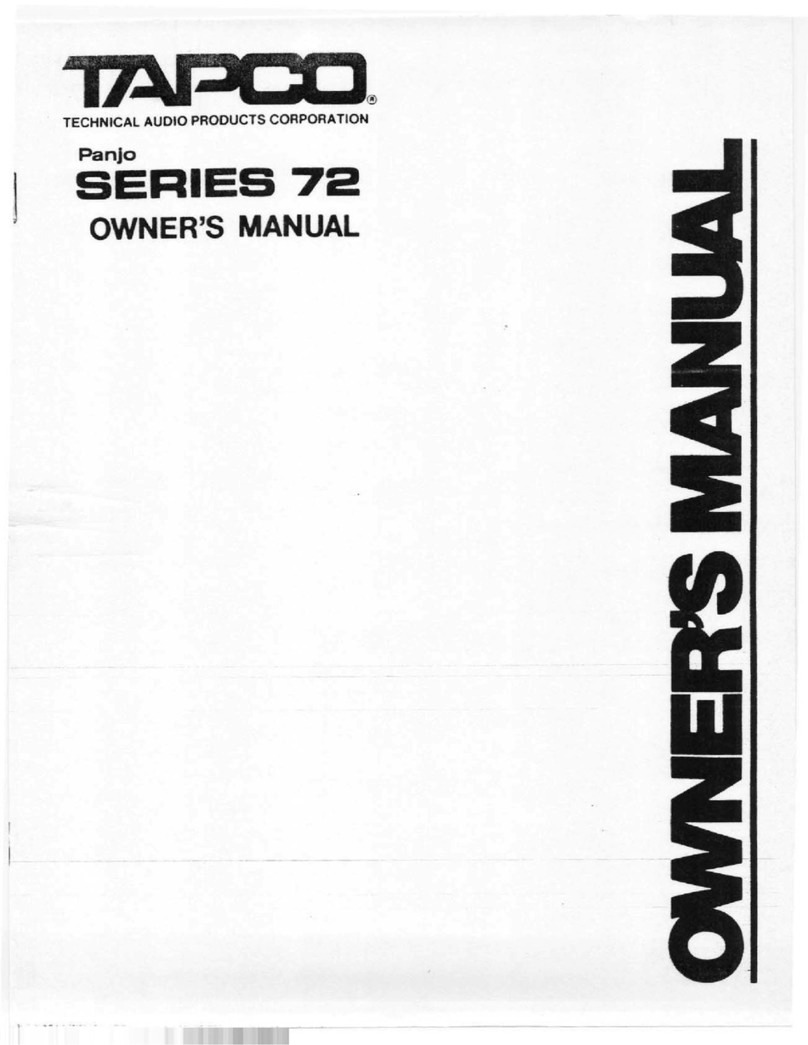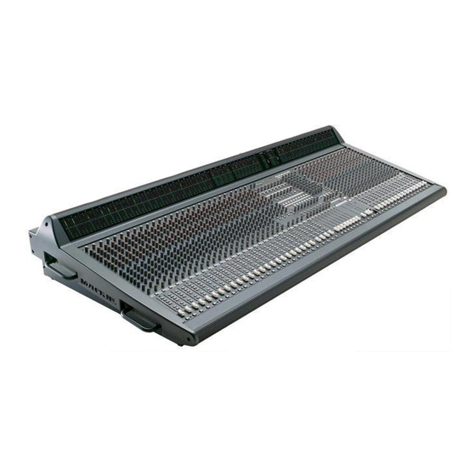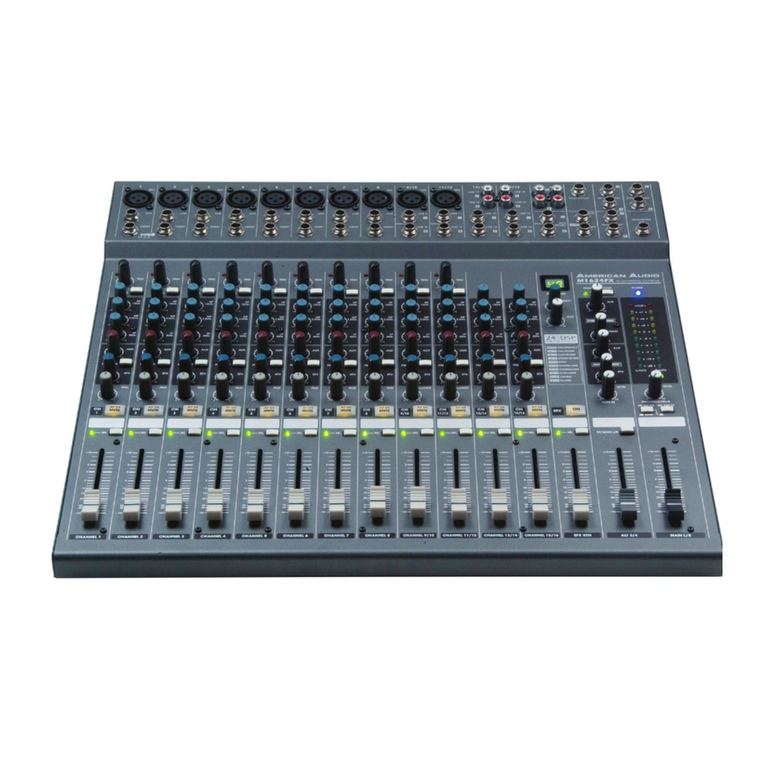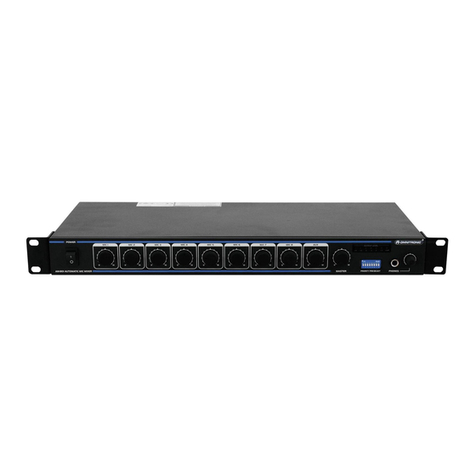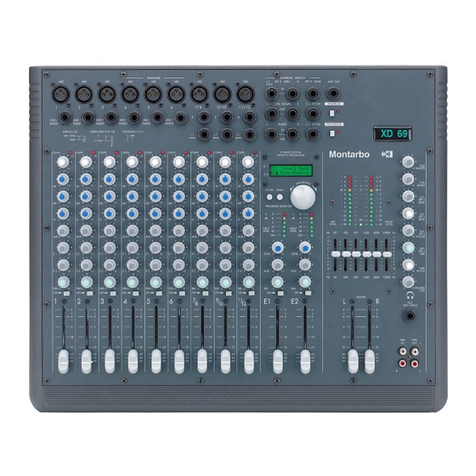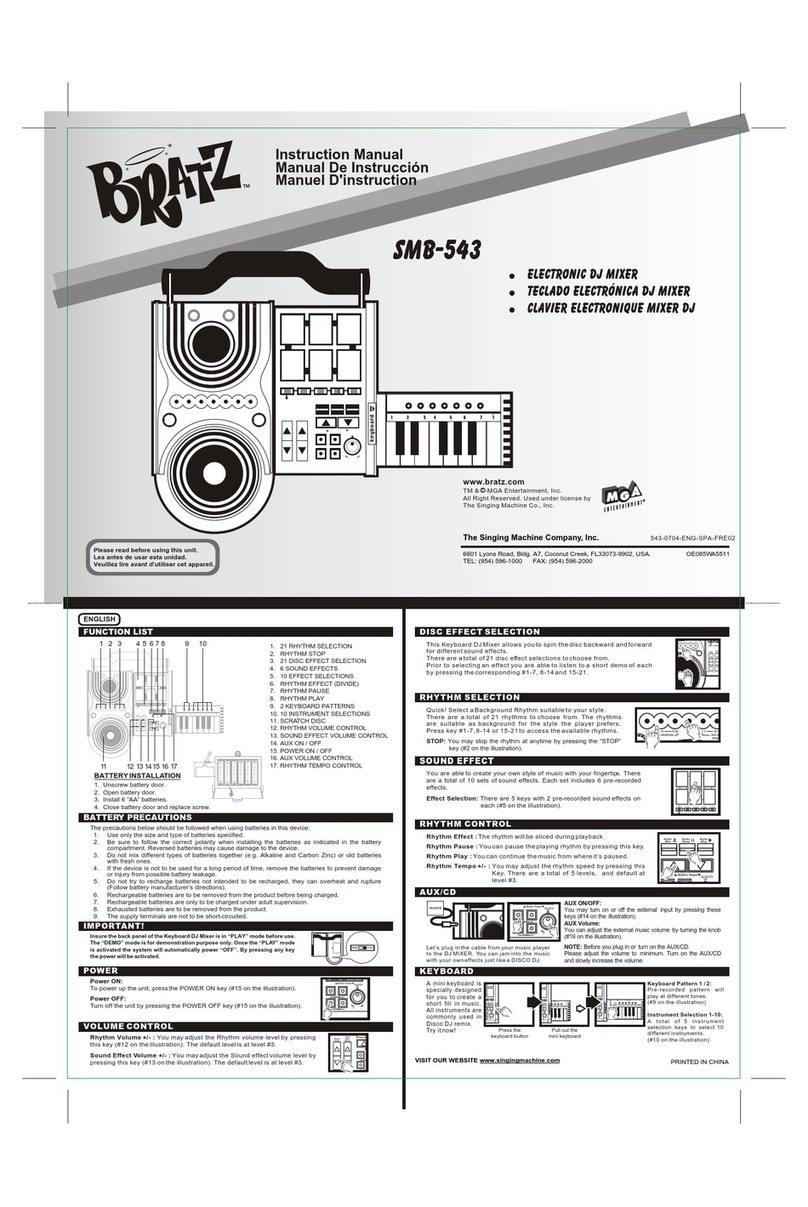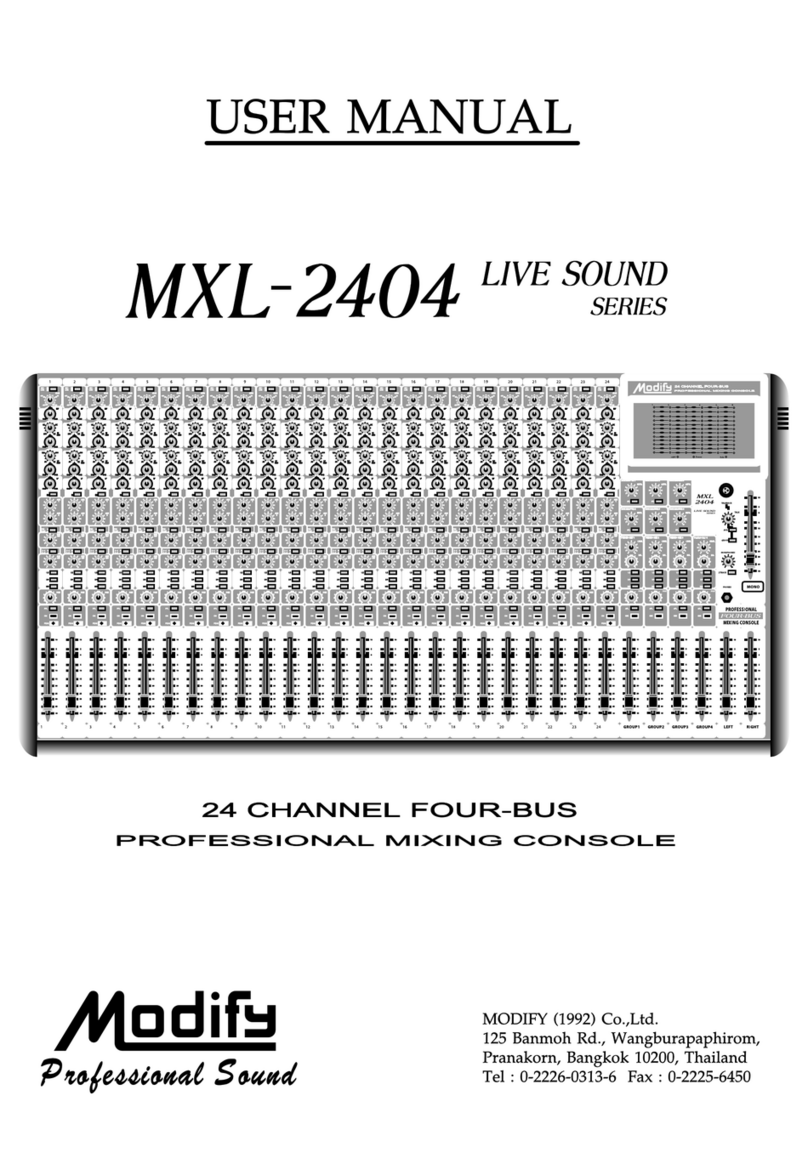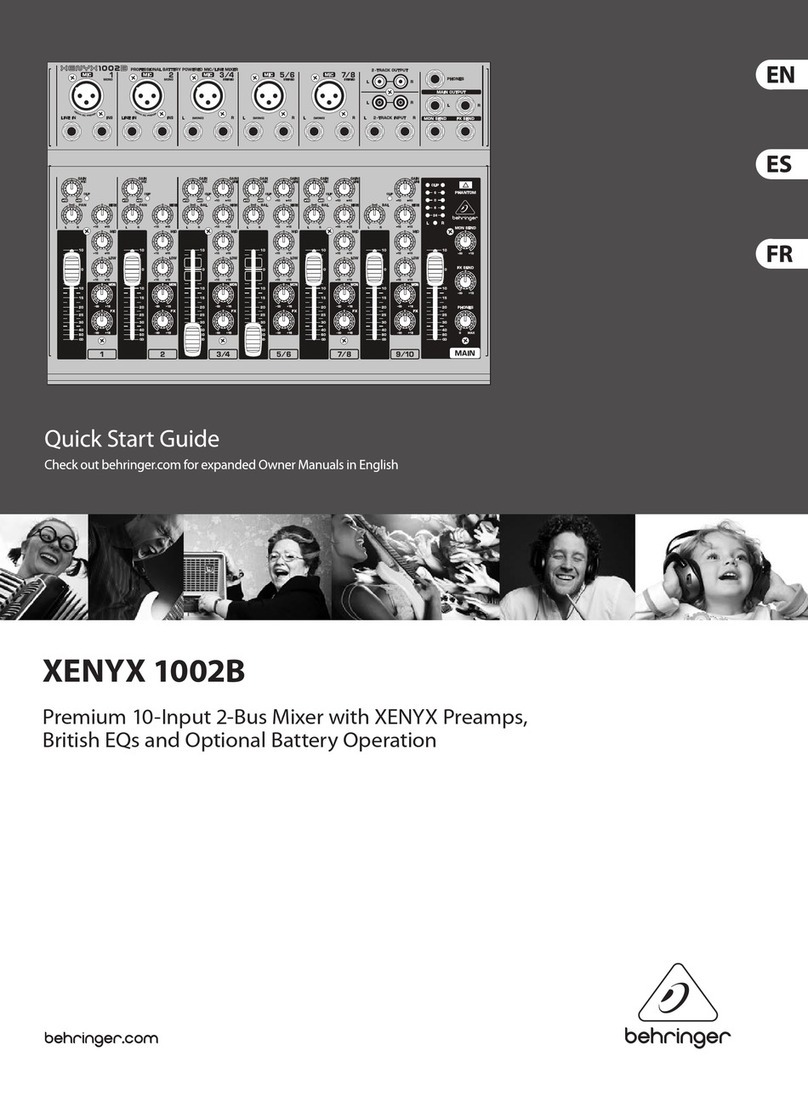Graco PR70 Series Troubleshooting guide

334116D
EN
Operation - Maintenance
PR70 Servo
Fixed or variable ratio systems. For accurate metering, mixing, and dispensing of
two-component materials. For professional use only.
Not approved for use in European explosive atmosphere locations.
Models U81923 and U82204
3000 psi (21 MPa, 207 bar) Maximum Working Pressure
100 psi (0.7 MPa, 7 bar) Maximum Air Inlet Pressure
Important Safety Instructions
Read all warnings and instructions in this
manual. Save these instructions.
U81923
U82204

Related Manuals
2 334116D
Contents
Related Manuals ...........................2
Warnings .................................3
Component Identification .....................
U81923 ................................5
Component Identification .....................
U82204 ................................6
Installation ................................7
HMI Navigation Overview ....................9
ChangeHMIValues .....................10
MainMenu ............................11
Status ................................12
SetupHome ...........................13
FeedControl ...........................14
Setup.................................15
Temperature U81923 Only . . . . . . . . . . . . . . . . 16
Shot/FlowSetup1.......................17
Shot/FlowSetup2.......................19
Temperature Gains U81923 Only . . . . . . . . . . . 20
Scaling ...............................21
AlarmHistory ..........................23
AlarmStatus ........................... 24
Startup .................................. 25
Setup....................................26
EnterData.............................26
Prime the Dispense Head . . . . . . . . . . . . . . . . . 26
PhasingAdjustment .....................28
Adjust Dispense Valve Snuff Back (MD2 Valve
Only) ..............................30
Calibrate Dispense Weight Ratio . . . . . . . . . . . 30
Pressure Relief Procedure . . . . . . . . . . . . . . . . . . 33
FlushingProcedure ........................34
Shutdown ................................35
Maintenance ..............................36
Schedule ..............................36
CleanthePumpShafts ...................36
Disassemble and Clean the Dispense Head (MD2
ValveOnly) .........................36
Flush Pneumatic Air Motor 82/0216/11 . . . . . . . 37
Lubricate Pneumatic Air Motor . . . . . . . . . . . . . 37
Lubricate Gear Box of Pneumatic Air Motor
01/0368-1/11........................37
Troubleshooting ...........................38
Kits .....................................40
Appendix A - Homing Pumps . . . . . . . . . . . . . . . . 42
Appendix B - Logging In and Out . . . . . . . . . . . . . 43
Appendix C - Data Logging U81923 Only . . . . . . 44
Appendix D - Setting Temperature Gains U81923
Only..................................45
Dimensions...............................46
Stationary PR70 Servo . . . . . . . . . . . . . . . . . . . 46
Cart Mounted PR70 Servo . . . . . . . . . . . . . . . . 46
TechnicalData ............................47
Graco Standard Warranty . . . . . . . . . . . . . . . . . . . 48
GracoInformation .........................48
Related Manuals
PR70 and PR70v Operation and Parts Manuals
Part Description
3A0429 PR70 with Standard Display Module Operation and
Maintenance Manual
312759 PR70 and PR70v with Advanced Display Module
Operation and Maintenance Manual
312760 PR70 and PR70v Repair and Parts Manual
312394 PR70 and PR70v Feed Systems Manual
312761 PR70v Integrated Heat Instructions - Parts Manual
MD2 Dispense Valve Manual
Part Description
312185 MD2 Dispense Valve Instructions and Parts Manual

Warnings
334116D 3
Warnings
The following warnings are for the setup, use, grounding, maintenance, and repair of this equipment. The exclama-
tion point symbol alerts you to a general warning and the hazard symbols refer to procedure-specific risks. When
these symbols appear in the body of this manual or on warning labels, refer back to these Warnings. Product-specific
hazard symbols and warnings not covered in this section may appear throughout the body of this manual where
applicable.
ELECTRIC SHOCK HAZARD
This equipment must be grounded. Improper grounding, setup, or usage of the system can cause electric
shock.
• Turn off and disconnect power at main switch before disconnecting any cables and before servicing
or installing equipment.
• Connect only to grounded power source.
• All electrical wiring must be done by a qualified electrician and comply with all local codes and
regulations.
SKIN INJECTION HAZARD
High-pressure fluid from dispensing device, hose leaks, or ruptured components will pierce skin. This
may look like just a cut, but it is a serious injury that can result in amputation. Get immediate surgical
treatment.
• Engage trigger lock when not dispensing.
• Do not point dispensing device at anyone or at any part of the body.
• Do not put your hand over the fluid outlet.
• Do not stop or deflect leaks with your hand, body, glove, or rag.
• Follow the Pressure Relief Procedure when you stop dispensing and before cleaning, checking, or
servicing equipment.
• Tighten all fluid connections before operating the equipment.
• Check hoses and couplings daily. Replace worn or damaged parts immediately.
TOXIC FLUID OR FUMES HAZARD
Toxic fluids or fumes can cause serious injury or death if splashed in the eyes or on skin, inhaled, or
swallowed.
• Read MSDSs to know the specific hazards of the fluids you are using.
• Store hazardous fluid in approved containers, and dispose of it according to applicable guidelines.
• Always wear chemically impermeable gloves when spraying, dispensing, or cleaning equipment.
PERSONAL PROTECTIVE EQUIPMENT
Wear appropriate protective equipment when in the work area to help prevent serious injury, including
eye injury, hearing loss, inhalation of toxic fumes, and burns. This protective equipment includes but is
not limited to:
• Protective eyewear, and hearing protection.
• Respirators, protective clothing, and gloves as recommended by the fluid and solvent manufacturer.
WARNING

Warnings
4 334116D
FIRE AND EXPLOSION HAZARD
Flammable fumes, such as solvent and paint fumes, in work area can ignite or explode. To help prevent
fire and explosion:
• Use equipment only in well ventilated area.
• Eliminate all ignition sources; such as pilot lights, cigarettes, portable electric lamps, and plastic drop
cloths (potential static arc).
• Keep work area free of debris, including solvent, rags and gasoline.
• Do not plug or unplug power cords, or turn power or light switches on or off when flammable fumes
are present.
• Ground all equipment in the work area. See Grounding instructions.
• Use only grounded hoses.
• Hold gun firmly to side of grounded pail when triggering into pail. Do not use pail liners unless they
are antistatic or conductive.
•Stop operation immediately if static sparking occurs or you feel a shock.Do not use equipment
until you identify and correct the problem.
• Keep a working fire extinguisher in the work area.
EQUIPMENT MISUSE HAZARD
Misuse can cause death or serious injury.
• Do not operate the unit when fatigued or under the influence of drugs or alcohol.
• Do not exceed the maximum working pressure or temperature rating of the lowest rated system com-
ponent. See Technical Data in all equipment manuals.
• Use fluids and solvents that are compatible with equipment wetted parts. See Technical Data in all
equipment manuals. Read fluid and solvent manufacturer’s warnings. For complete information
about your material, request MSDS from distributor or retailer.
• Do not leave the work area while equipment is energized or under pressure.
• Turn off all equipment and follow the Pressure Relief Procedure when equipment is not in use.
• Check equipment daily. Repair or replace worn or damaged parts immediately with genuine manu-
facturer’s replacement parts only.
• Do not alter or modify equipment. Alterations or modifications may void agency approvals and create
safety hazards.
• Make sure all equipment is rated and approved for the environment in which you are using it.
• Use equipment only for its intended purpose. Call your distributor for information.
• Route hoses and cables away from traffic areas, sharp edges, moving parts, and hot surfaces.
• Do not kink or over bend hoses or use hoses to pull equipment.
• Keep children and animals away from work area.
• Comply with all applicable safety regulations.
MOVING PARTS HAZARD
Moving parts can pinch, cut or amputate fingers and other body parts.
• Keep clear of moving parts.
• Do not operate equipment with protective guards or covers removed.
• Pressurized equipment can start without warning. Before checking, moving, or servicing equipment,
follow the Pressure Relief Procedure and disconnect all power sources.
BURN HAZARD
Equipment surfaces and fluid that is heated can become very hot during operation. To avoid severe
burns:
• Do not touch hot fluid or equipment.
WARNING

Component Identification U81923
334116D 5
Component Identification
U81923
Key:
A Tanks
B Main Power Disconnect
C Foot Switch
D PR70 Servo with Shield
E Agitator
F Power On / E-stop Switch
G Tank Stand
H Cart
J USB Port for Data Collection
K Human Machine Interface (HMI)
L Heated Over / Under Block
M Inlet for Hardener / Catalyst
N Inlet for Base / Resin
P Inlet for Flush
R Static Mixer
S Mixer Heater
T Pressure Transducer
U Mixed Material Temperature Probe
V Material Outlet
FIG. 1: Typical Installation
E
E
A
H
C
A
G
D
B
F
J
K
P
L
S
V
T
UN
M
R

Component Identification U82204
6 334116D
Component Identification
U82204
Key:
A Tanks/Feed
B Main Power Disconnect
C Foot Switch
D PR70 Servo with Shield
E Power On / E-stop Switch
F Human Machine Interface (HMI)
G Pressure Transducer
H Material Outlet
I Dispense Valve
FIG. 2: Typical Installation
I
H
G
D
A
C
F
E
B

Installation
334116D 7
Installation
1. Locate PR70 Servo.
Locate on a level surface and lock casters. See Dimen-
sions on page 46 for space requirements.
2. Electrical Requirements.
NOTE:
PR70 Servo without heat requires 240VAC single
phase, 15 amps, 50/60 hertz.
PR70 Servo with heat requires 240VAC single phase,
40 amps, 50/60 hertz.
3. Connect Electrical Cord.
NOTE: Power cord is not supplied.
Electrical Cord Wires
240V, 1 phase: L1, L2, GND
Typical Voltage Readings 240V, 1 phase:
L1-L2: 240V
L1 or L2-GND: 115V
Use a screwdriver to connect the two power leads to L1
and L2. Connect green to ground (GND).
Installing this equipment requires access to parts
which may cause electric shock or other serious injury
if work is not performed properly. Have a qualified
electrician connect power and ground to main power
switch terminals, see step 3 in this installation
procedure. All electrical wiring must be done by a
qualified electrician and comply with all local codes
and regulations.
NOTICE
Never connect to 480V, 3 phase power. Severe
equipment damage will occur.
L1
L2
GND

Installation
8 334116D
4. Ground the System.
Control enclosure and Pump: grounded through power
cord. See Connect Electrical Cord.
Fluid supply container: follow local code.
Solvent pails used when flushing: follow local code. Use
only conductive metal pails, placed on a grounded sur-
face. Do not place the pail on a nonconductive surface,
such as paper or cardboard, which interrupts grounding
continuity.
To maintain grounding continuity when flushing or
relieving pressure: hold metal part of the spray gun/dis-
pense valve firmly to the side of a grounded metal pail,
then trigger the gun/valve.
5. Connect Air (if applicable for MD2 valve).
If the system requires air to open and close a dispense
valve, connect a compressed airline to the inlet found in
the rear of machine.
6. Connect the Dispense hoses.
Connect the heated hoses to the outlets of the pumps.
Plug the heater connections into the proper outlets on
the control panel.
NOTE: The non-drip valves on the ends of the hoses
are different diameters and only plug into the over /
under block in one location.
7. Connect the Over / Under Block, U81923 Only.
Connect the other ends of the heated hoses with the
non-drip valve fittings into the over / under block. Plug
the over / under block heater with probe and mixer
heater with probe into the proper outlets on the panel.
Connect the pressure transducer and mixed material
temperature probe connections into the proper outlets
on the panel.
8. Flush the System.
The machine is tested at the factory with mineral oil.
Flush the machine before the first use.
The equipment must be grounded to reduce the risk of
static sparking and electric shock. Electric or static
sparking can cause fumes to ignite or explode.
Improper grounding can cause electric shock.
Grounding provides an escape wire for the electric
current.
11/16 Dia. Non
Drip Valve
02/0707-00/50
5/8 Dia. Non Drip
Valve
U81744
Flush Hookup
1/4 NPT male

HMI Navigation Overview
334116D 9
HMI Navigation Overview

HMI Navigation Overview
10 334116D
The screens all have the same menu at the bottom that
navigates from ones screen to another.
NOTE: Some icons may not appear depending on the
model.
Change HMI Values
To edit a value such as flow rate or percentages, press
the button.
When the keypad comes up, enter the new value.
NOTE: The limits are displayed between the readout
and keypad.

HMI Navigation Overview
334116D 11
Main Menu
Icon Description
Enables the pump drive. When the system is powered up or the drive faults, it needs to be enabled.
Disables the pump drive. This is useful for maintenance. It also is need to clear some drive faults; dis-
able the drive and then enable it.
Indicates if the pump drive is disabled or enabled.
Indicates pump motor position. This is a useful reference to where the pump is. Units are revolutions.
This is used to send the pumps to the home position. Note the home position is the point in the dis-
pense cycle when the pistons begin metering material.
This starts a pump dispense cycle. Green indicates the pumps are in a dispense cycle. This signal
works the same as the start cycle hard wired input.
This is used to jog the pumps in the forward direction. This is used for maintenance.
This is used to jog the pumps in the reverse direction. This is used for maintenance.
Used to start data logging when the system is powered up. See Appendix C - Data Logging U81923
Only for more information. U81923 Only.
This closes the HMI program and returns the HMI to it's operating environment. This is only used for
changing HMI programs or updating the software.
This is used to silence the audible alarm.

HMI Navigation Overview
12 334116D
Status
This screen shows the current values for various operat-
ing parameters such as pressure, flow rate, and tem-
perature.
NOTE: Temperatures only show up for model U81923.
Used to login to gain access to functions a regular user can't get to. See Appendix B - Logging In
and Out for more information.
Used to logout. See Appendix B - Logging In and Out for more information.
Shows the current user that is logged in.
Indicates if there is an active fault.
Indicates pump position and velocity in revolutions and revolutions per second.
“+” is forward direction.
“-” is retract direction.
Turns on the power circuit to the pump drive. When the system is powered up it needs to be powered
up.
Turns off power to the pump drive. Note 24VDC is still supplied to the drive, this only turns off the
power circuit.
Icon Description

HMI Navigation Overview
334116D 13
Setup Home
This screen is used to set the home position and adjust
the home position based on where the piston begins to
enter the metering tube. See Appendix A - Homing
Pumps for more information.
Icon Description
The Enable/Disable Drive push buttons and indicators function the same as the main screen.
The motor has an absolute encoder built in that retains the position even when powered down. In the
event the encoder cable is disconnected between the drive and motor, the home position (zero) will
need to be set again. This sets the new home position. See below for more details.
The Adjusted box shows the adjusted position value set for home. The actual value shows the motor
position as it is incremented with the up/down keys. The units are in motor revolutions.
These keys bump the position of the motor forward or backward. The current motor position is located
in the box marked “Actual”.
This rehomes the pumps. The home cycle sends the pump to the reload (retracted) position and then
to the Adjusted home position. This push button functions the same as the one on the main screen.
Once the new home position is determined, this moves the Actual value into the Adjusted value. This
will always be the new home position.
This resets any drive faults that occur.
This resets any drive faults that occur that shutdown the drive.
Turns on the power circuit to the pump drive. When the system is powered up it needs to be powered
up.
Turns off power to the pump drive. Note 24VDC is still supplied to the drive, this only turns off the
power circuit.

HMI Navigation Overview
14 334116D
Feed Control
Icon Description
This indicates the tank status: No Levels Used = system is set up without any level sensors, High
Level = the high level switch is tripped, Low Level = material is below the low level sensor, Filling =
the tank is auto filling, Material Present = tank is loaded, Fill Fault = the amount of time to fill the tank
has been exceeded, Accumulator Mode- feed is accumulators, Sensor Fault = the tank sees material
on the high level sensor but not on the low level sensor.
Accumulated time readout when tank is filling in seconds.
Tank Mode: Choose how feed is set up. Low Level Shutdown is used to disable pumps when either
tank has a low level. Engage Alarm is used to sound the audible alarm when the tanks is low (the
pumps stay enabled). Engage Autofill is used to automatically refill the tank when the low level is
sensed. Accumulator Mode is when pumps are feed with accumulators instead of tanks. Disable feed
controls is used when level sensing is not needed. Note both tanks are set up in the same mode.
In Auto Fill Mode, either tank can begin filling by pushing the Start Fill push button or when material
goes below the low level sensor. The filling stops when the high level sensor is tripped or the Stop Fill-
ing push button is pushed. Note the Stop Filling button stops filling on both tanks.
This is where the operator sets the amount of time it takes to fill the tanks. If the tank doesn't fill within
this amount of time, a fill fault occurs. This only is enabled in Auto Fill mode.
In Low Level Shutdown Mode, once the low level sensor see the material is low, it allows the pumps
to cycle however many more times is set on this counter.
This silences the audible alarm.
When a fill fault occurs, this pushbutton resets it.

HMI Navigation Overview
334116D 15
Setup
NOTE: These values are set at the factory and typically
do not need to be changed.
Icon Description
This enters the pump size used for calculating shot size and flow rates. The units are mm2. For exam-
ple if An LC1960 metering assembly (960 pump) was on the A side, 960 is the value entered.
This is the gear reduction (if any) used between the servo motor and actuator. If there is no gear box,
enter '1'.
This is the speed the actuator moves during the reload and home cycle in mm/sec.
This is the metered stroke or the distance the piston travels in the pump tube. This value is used for
calculating shot size and flow rates. For standard PR70's the value is 1.5”.
This is the reload stroke or the distance the piston travels to the retracted position to reload the pump.
For standard PR70's the value is 1.0”. This value may be less for thinner materials to shorten cycle
times.
This is the lead of the actuator in millimeters per motor revolution. The typical value for the PR70 is
10.
These pushbuttons choose the type of PR70, either the fixed ratio frame or the variable ratio frame.
These pushbuttons allow the pump speed to be set as a fixed value entered by the user on the
Shot/Flow screen or to be a variable speed set by a user entered voltage on an analog input in the
PLC. Note the remote speed is not active in Pressure Mode.

HMI Navigation Overview
16 334116D
Temperature U81923 Only
Icon Description
These pushbuttons enable and disable the heat circuit for each heat load. The enabled or disabled
status for each heat load is displayed underneath.
This indicates if heater is heating or not.
Red “Heater On” indicates that the heater is active.
Yellow “Heater Off” indicates the heater is not active.
This is the set point of the heat zone. Units are degrees Celsius.
Displays the actual temperature of the heat zone. In the case of the tanks, it also displays the tem-
perature of the probe under the blanket.
Are used to enable or disable all heat zones at the same time.
Indicates the temperature of the mixed material at the outlet.
This navigates to the screen where the heater gains are set.

HMI Navigation Overview
334116D 17
Shot/Flow Setup 1
Icon Description
Picks the operating mode for the pumps. Off Mode disables the pumps. Pressure Mode allows the
pumps to cycle within a pressure window to deliver a defined shot size at a defined flow rate. Shot
Mode allows the pumps dispense a defined shot size at a defined flow rate. Continuous Mode allows
the pumps to cycle continuously at a defined flow rate. Operator Mode lets the operator determine the
shot size by how long the start device is actuated at a defined flow rate. In operator mode, the pumps
must be retracted with an external customer signal or the “Home” push button.
If the system is equipped with a dispense valve, this sets the mode that it will operate. Open Mode
holds the dispense valve open. Close Mode holds the valve closed. Auto Mode opens the valve when
the pumps are dispensing and closed the valve when the pumps are done. Note cycling the pumps
with the dispense valve in Close Mode and no other valves open will cause the servo motor to stall
and fault.
If the system is equipped with a pressure transducer, this displays the current material pressure at the
outlet.
If the system is equipped with a pressure transducer and the pump mode is set to Pressure Mode,
these values determine when the pumps will stop and start. If the High Limit is set at 100psi and the
Low Limit is set at 50psi, the pumps will cycle until the pressure reaches 100psi and stop. The pres-
sure will drift down and when it gets to 50psi the pumps will start up again. This repeats until the value
in the shot size is reached. Units are pounds per square inch (psi).
This sets the shot size (cc's) and flow rate (cc's/sec) for ten programmed shots. Push the button on
the left of the values to pick the shot to dispense. The push button will change green to indicate the
chosen shot/flow rate. Push the shot size or flow rate field to change the value.
This is used to send the pumps to the home position. Note the home position is the point in the dis-
pense cycle when the pistons begin metering material.
The top row shows how many total strokes the pumps will take to get the user entered shot size. The
bottom row shows how many strokes have been taken as the pumps cycle.

HMI Navigation Overview
18 334116D
Displays the position and speed of the servo motor in units of motor revolutions and motor revolutions
per second.
This starts the cycle. The color is green as long as the pumps are cycling
Enter the volumetric ratio of A to B material. This value is used for calculating shot size only, it doesn't
change the ratio.
This displays the flow rate the pumps will cycle at. Note if the speed control is User Entered, the value
of the chosen programmed flow rate will be displayed. If the Remote Speed is chosen, the converted
analog speed value will be displayed.
This displays the shot size the pumps will dispense based on the chosen programmed shot size.
Icon Description

HMI Navigation Overview
334116D 19
Shot/Flow Setup 2
Icon Description
Mixed Material Pump Pressure Setpoints (psi): For RTM applications, this box displays the current
pressure of the mixed material. The user can enter a high limit and low limit. When the machine is set
to pressure mode, the pumps cycle until the high pressure limit is reached, then the pumps stop and
the mixed material pressure drifts down below the low limit and the pumps begin to cycle again.
Current Pressure: This displays the current A and B pressure of the pump.
Low Limit Warning: This is a user settable pressure for the A and B pumps. If during pumping the low
limit pressure is not reached (due to a bad piston or leak), the low limit trips and the audible alarm
sounds. The pumps can still run during this warning. The silence alarm button turns off the alarm.
High Limit Warning: This is a user settable pressure for the A and B pumps. If during pumping the
high limit pressure is exceeded, the high limit trips and the audible alarm sounds. The pumps can still
run during this warning. The silence alarm button turns off the alarm.

HMI Navigation Overview
20 334116D
Temperature Gains U81923 Only
See Appendix D - Setting Temperature Gains U81923 Only for information on setting temperature gains.
High Limit Shut Down: This is a user settable pressure for the A and B pumps. If during pumping the
high limit pressure is exceeded, the high limit trips and the audible alarm sounds. The drive shuts
down and pumping stops. The silence alarm button turns off the alarm. The pressure must be relieved
to restart the drive.
NOTE: Pressure transducers must be plugged in for the pumps to cycle.
NOTE: If the pressure exceeds 3000 psi, the drive will shut down. This is a factory setting and cannot
be changed by the operator.
Shot Mode Purge Timer: Off/On. This turns the purge timer off and on. When the purge timer is on,
the pumps will cycle after a period of inactivity. Note this is only active in shot mode. This timer can
also be used to recirc material if equipped with the proper hardware.
Shot Mode Purge Timer: Shot Size/Flow Rate. These are the values the user can enter to determine
how much material to purge and at what flow rate. When the purge timer times down the pumps cycle
at these parameters. When the operator takes the next shot, the regular shot parameters are used
again.
Shot Mode Purge Timer: Purge Timer (sec). This is the user entered value that determines how long
the pumps will sit idle before they purge. Note when the timer times down the audible alarm sounds
for a brief time to warn the operator the machine will cycle.
Shot Mode Purge Timer: Time before Purge. This show the purge timer timing down.
Icon Description
This is the value of the gain used for determine how fast the heat load heats up on initial startup and
how much the temperature fluctuates. The default value is 100.
Icon Description
Other manuals for PR70 Series
10
This manual suits for next models
2
Table of contents

